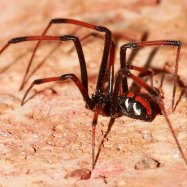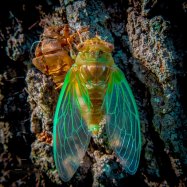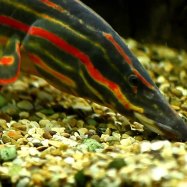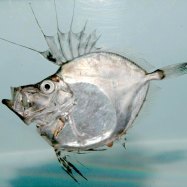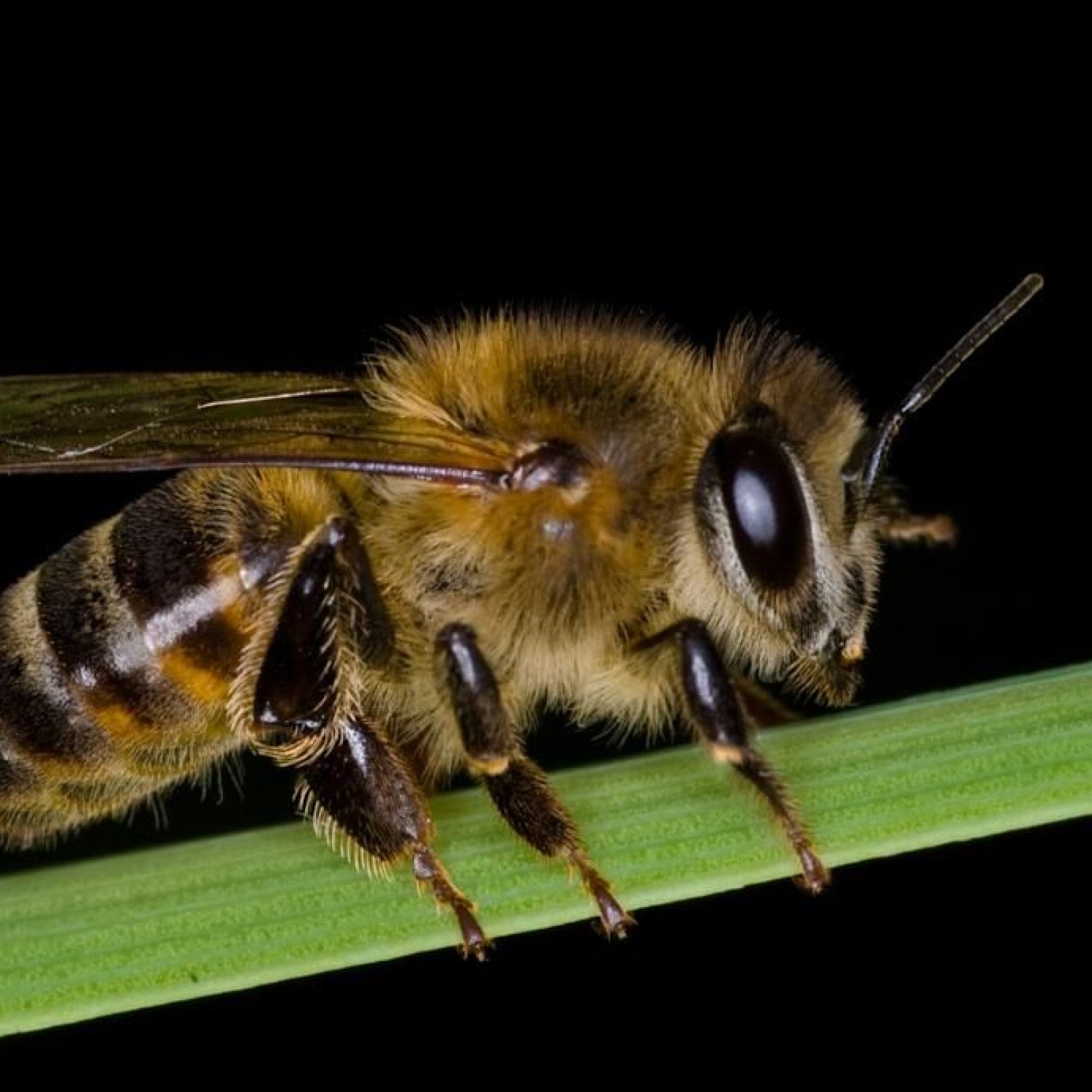
Africanized Bee
The length of an Africanized Bee ranges from 10 to 17 mm (0.4 to 0.7 inches).
Learn about Africanized Bees, also known as killer bees. These insects can be found in many countries, including Brazil and the southern US. They have a distinctive compact body shape and range from 10-17 mm in length. Beware of their powerful sting when encountering them in the wild. #AfricanizedBees #BeeFacts #Insects #Wildlife
Animal Details Summary:
Common Name: Africanized Bee
Kingdom: Animalia
Habitat: Africanized Bees are well adapted to tropical and subtropical climates. They prefer to nest in shelters such as tree cavities, hollow logs, abandoned animal burrows, and man-made structures like attics and walls.
The Thriving and Controversial World of the Africanized Bee
Imagine walking through a field of vibrant wildflowers, listening to the humming of busy insects as they buzz from flower to flower. Suddenly, a swarm of bees approaches, their loud buzzing growing louder and more intense with each passing second. You quickly realize that these are not your average bees – they are Africanized Bees, also known as “killer bees.”The Africanized Bee, also scientifically known as Apis mellifera scutellata, is a highly talked about and controversial species of bee that has gained a reputation for being aggressive and dangerous Africanized Bee. Despite this reputation, there is much more to these bees than meets the eye. In this article, we will delve into the fascinating world of the Africanized Bee, exploring its behavior, habitat, and the controversy surrounding its introduction to other parts of the world.
The Origins and Distribution of the Africanized Bee
The Africanized Bee is native to sub-Saharan Africa, where it has been thriving for thousands of years. However, in the 1950s, a Brazilian scientist named Warwick Kerr sought to increase honey production by crossbreeding African Honey Bees with European Honey Bees. This resulted in the creation of a new hybrid species – the Africanized Bee.Unfortunately, Kerr's experiment did not go as planned, and the Africanized Bees escaped from his laboratory in 1957. This marked the beginning of the Africanized Bee's expansion across South and Central America, the southern United States, and the Caribbean. Due to their aggressive nature and rapid reproduction rate, these bees quickly earned the nickname "killer bees" and sparked a worldwide debate on their impact on the environment and human safety.
The Anatomy and Behavior of the Africanized Bee
On average, the Africanized Bee is relatively the same size as other honey bees, with a compact oval-shaped body measuring between 10 to 17 mm (0 Ayam Cemani.4 to 0.7 inches) in length. They have the same distinctive black body with bands of yellow or orange as other honey bees and possess six legs, two pairs of wings, and specialized mouthparts for feeding on nectar and pollen.Similar to their European counterparts, Africanized Bees live in colonies consisting of a queen, male drones, and female worker bees. They are social creatures and work collaboratively to build, defend, and maintain their hives. However, what sets Africanized Bees apart is their aggressive behavior.
Africanized Bees are easily agitated and respond quickly and violently when disturbed, making them more likely to swarm and attack in large numbers. This behavior is a result of their natural instincts to protect their hives from potential predators and competitors. While their venom is no more potent than other bee species, the sheer number of bees in a swarm can be deadly to both humans and animals.
The Controversy Surrounding Africanized Bees
Ever since their accidental introduction to Brazil, Africanized Bees have been at the center of controversy and debate. On one hand, they are praised for their superior honey production, pollination capabilities, and resilience in harsh environments. On the other hand, they are often vilified for their aggressive behavior and perceived threats to humans and the ecosystem.One of the most significant concerns raised by Africanized Bees is their impact on native bee populations. As an invasive species, they can outcompete and mate with local bee species, leading to the loss of genetic diversity and potentially resulting in the decline of native bees. Additionally, their aggressive nature has caused considerable damage to the beekeeping industry, with beekeepers struggling to manage their behavior and protect their hives.
Furthermore, there are concerns about the potential health risks associated with Africanized Bees. Their tendency to swarm and attack in large numbers can be dangerous for humans and animals, especially those with allergies to bee stings. There have been numerous documented cases of people being stung to death by Africanized Bees, sparking fear and concern among the public.
The Adaptability and Habitat of Africanized Bees
One of the reasons behind the Africanized Bee's successful invasion of other parts of the world is their adaptability to various environments. They are well adapted to living in tropical and subtropical climates, with a preference for nesting in shelters such as tree cavities, hollow logs, and abandoned animal burrows. They have also been known to colonize man-made structures like attics and walls.This adaptability has allowed them to thrive in new environments and rapidly expand their range. Today, Africanized Bees can be found in various countries across the world, including Brazil, Argentina, Mexico, the southern United States, and several Caribbean islands. The fear of their continued spread has led to strict regulations and measures being put in place to prevent their introduction into new areas.
The Role of Africanized Bees in the Ecosystem
Despite their controversial reputation, Africanized Bees play a crucial role in the ecosystem as pollinators. As herbivores, they obtain their food from flower nectar and pollen, and their efficient pollination helps sustain a diverse range of plants and crops. This, in turn, supports the growth and survival of other animals and contributes to the overall balance of the ecosystem.Moreover, the production of honey by Africanized Bees has been vital to local communities, providing a source of income and nutrition. In many parts of the world, honey is considered a delicacy and is used in a variety of cultural and traditional practices. This highlights the importance of preserving the Africanized Bee's role in the ecosystem and finding ways to coexist with them.
Conclusion
In conclusion, the Africanized Bee is a unique and fascinating species that has sparked controversy, fear, and admiration. From its accidental creation to its widespread invasion, there is no denying the impact these bees have had on the world. While their aggressive behavior and potential threats to human safety cannot be ignored, it is crucial to understand the ecological role and significance of Africanized Bees.As debates continue on how to manage these bees, it is essential to remember that they are an essential part of the ecosystem and play a crucial role in sustaining life on Earth. By learning more about these bees, their behavior, and habitat, we can move towards finding ways to coexist with them and protect their vital role in the natural world.

Africanized Bee
Animal Details Africanized Bee - Scientific Name: Apis mellifera scutellata
- Category: Animals A
- Scientific Name: Apis mellifera scutellata
- Common Name: Africanized Bee
- Kingdom: Animalia
- Phylum: Arthropoda
- Class: Insecta
- Order: Hymenoptera
- Family: Apidae
- Habitat: Africanized Bees are well adapted to tropical and subtropical climates. They prefer to nest in shelters such as tree cavities, hollow logs, abandoned animal burrows, and man-made structures like attics and walls.
- Feeding Method: Africanized Bees are herbivores and obtain their food from flower nectar and pollen. They are important pollinators and play a crucial role in the ecosystem.
- Geographical Distribution: Africanized Bees are native to sub-Saharan Africa. They are an invasive species in other parts of the world, including South and Central America, the southern United States, and the Caribbean.
- Country of Origin: Sub-Saharan Africa
- Location: Africanized Bees can be found in various countries across the world, including Brazil, Argentina, Mexico, the southern United States, and several Caribbean islands.
- Animal Coloration: Africanized Bees have a similar coloration to other honey bees. They have a black body with bands of yellow or orange.
- Body Shape: Africanized Bees have a similar body shape to other honey bees. They have a compact, oval-shaped body with six legs, two pairs of wings, and mouthparts designed for feeding on nectar and pollen.
- Length: The length of an Africanized Bee ranges from 10 to 17 mm (0.4 to 0.7 inches).
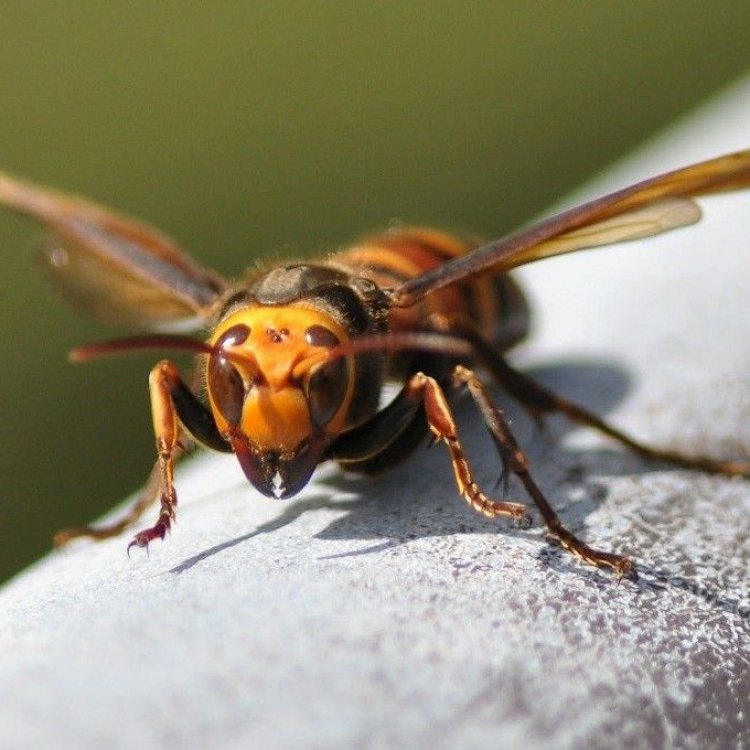
Africanized Bee
- Adult Size: Africanized Bees are similar in size to other honey bees. The adult worker bees measure between 10 to 17 mm (0.4 to 0.7 inches) in length.
- Average Lifespan: The average lifespan of an Africanized Bee is around 40 days.
- Reproduction: Africanized Bees reproduce through sexual reproduction. The queen bee mates with multiple drones (males), and the fertilized eggs develop into worker bees or new queens.
- Reproductive Behavior: Africanized Bees are known for their swarming behavior. When the colony becomes overcrowded, a new queen is produced, and the old queen, along with a large portion of the worker bees, leaves the hive to form a new colony.
- Sound or Call: Africanized Bees produce buzzing sounds when flying. They also communicate through pheromones and dances.
- Migration Pattern: Africanized Bees do not have a specific migration pattern. However, they can spread and establish new colonies by swarming and absconding.
- Social Groups: Africanized Bees are highly social insects and live in colonies. A colony typically consists of a single queen, thousands of worker bees, and a few hundred drones. Each bee has specific roles and responsibilities within the colony.
- Behavior: Africanized Bees are known for their defensive behavior. They are more aggressive than other honey bee species and tend to react to disturbances with increased aggression and a higher number of stings. However, they do not generally pose a threat unless their nest is disturbed.
- Threats: Africanized Bees are not a direct threat to humans if left undisturbed. However, they can become aggressive if they perceive a threat to their colony. Multiple stings from Africanized Bees can be dangerous, especially for individuals who are allergic to bee stings.
- Conservation Status: Africanized Bees are not considered a threatened species. However, their aggressive behavior and potential displacement of other honey bee species are concerns for beekeepers and conservationists.
- Impact on Ecosystem: Africanized Bees play a significant role in pollination and contribute to ecosystem health. They help in the reproduction of flowering plants and the production of fruits and seeds.
- Human Use: Africanized Bees are primarily managed for honey production and crop pollination. Beekeepers use specific management techniques to minimize the aggressive behavior and maintain colonies of Africanized Bees for beneficial purposes.
- Distinctive Features: The main distinctive feature of Africanized Bees is their aggressive behavior when their nest is disturbed. They tend to react quickly and in large numbers, stinging in defense of their colony.
- Interesting Facts: 1. Africanized Bees are often referred to as 'killer bees' due to their aggressive behavior. 2. They are a hybrid of European honey bees and African honey bees. 3. Africanized Bees were accidentally released in Brazil in the 1950s and have since spread throughout the Americas. 4. They have adapted well to hot and dry climates, making them more resilient than other honey bee species. 5. Africanized Bees have a shorter development time compared to other honey bees, allowing for faster colony growth and reproduction.
- Predator: Africanized Bees have predators such as birds, wasps, and other insects. However, their main defense mechanism is their aggressive behavior and stinging.
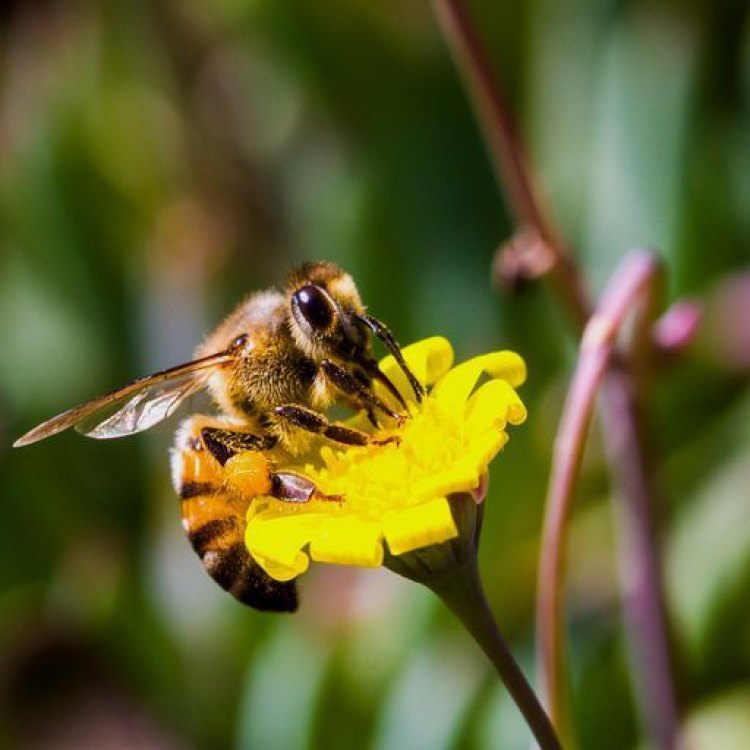
Apis mellifera scutellata
The Fascinating World of the Africanized Bee
In the world of bees, there is one species that stands out due to its unique and sometimes infamous characteristics- the Africanized Bee. These bees, also known as 'killer bees,' have gained widespread attention due to their aggressive behavior. However, there is much more to these creatures than meets the eye. From their interesting reproductive behavior to their crucial role in ecosystem health, Africanized Bees are truly fascinating creatures PeaceOfAnimals.Com. So, let's take a closer look at the unique features of these bees and discover why they are essential for our planet.Africanized Bee Basics
The Africanized Bee, or Apis mellifera scutellata, is a hybrid of African honey bees and European honey bees. They were accidentally released in Brazil in the 1950s and have since spread throughout the Americas, earning the nickname 'killer bees' due to their aggressive behavior. However, Africanized Bees are very similar in size to other honey bees, with adult worker bees measuring between 10 to 17 mm (0.4 to 0.7 inches) in length. They also have an average lifespan of around 40 days and reproduce through sexual reproduction, with the queen bee mating with multiple drones.Reproductive Behavior
One of the most fascinating aspects of Africanized Bees is their unique reproductive behavior. Like other honey bees, the queen bee lays eggs, and the eggs are then fertilized by the drones Anglerfish. However, when the colony becomes overcrowded, Africanized Bees have a distinctive trait known as swarming. This means that a new queen is produced, and the old queen, along with a large portion of the worker bees, leaves the hive to form a new colony. This behavior helps prevent overcrowding and promotes the dispersal of genes within the species.Social Groups and Behavior
Africanized Bees are highly social insects and live in colonies. A typical colony consists of a single queen, thousands of worker bees, and a few hundred drones. Each bee has specific roles and responsibilities within the colony, with the queen responsible for reproduction, worker bees tending to the hive and collecting food, and drones mating with the queen.However, Africanized Bees are notorious for their defensive behavior. They are more aggressive than other honey bee species and tend to react to disturbances with increased aggression and a higher number of stings. This behavior is a crucial adaptation that helps protect the colony and its resources. However, Africanized Bees do not generally pose a threat to humans unless their nest is disturbed.
Impact on Ecosystems
While Africanized Bees may have a reputation for being 'killer bees,' they play a significant role in pollination and contribute to ecosystem health. These bees help in the reproduction of flowering plants and the production of fruits and seeds. Without them, many plant species would struggle to reproduce, resulting in a decline in biodiversity.Human Use and Conservation Status
Africanized Bees are primarily managed for honey production and crop pollination. Beekeepers use specific management techniques to minimize the aggressive behavior and maintain colonies of Africanized Bees for beneficial purposes. Additionally, these bees are not considered a threatened species, but their aggressive behavior and potential displacement of other honey bee species raises concerns for beekeepers and conservationists.Predators
Like any other species, Africanized Bees also have predators. Birds, wasps, and other insects are known to prey on these bees. However, the main defense mechanism of Africanized Bees is their aggressive behavior and stinging. This helps protect them and their colonies from potential predators.Distinctive Features and Interesting Facts
The main distinctive feature of Africanized Bees is their aggressive behavior when their nest is disturbed. They tend to react quickly and in large numbers, stinging in defense of their colony. However, there are many other interesting facts about Africanized Bees that often go unnoticed.For starters, as mentioned earlier, Africanized Bees are a hybrid of two bee species. This makes them resilient to hot and dry climates, unlike their European counterparts. They also have a shorter development time compared to other honey bees, allowing for faster colony growth and reproduction. Additionally, Africanized Bees are known for their buzzing sounds when flying, and they also communicate through pheromones and dances, making them a unique and fascinating species.
Conclusion
In conclusion, Africanized Bees are more than just 'killer bees.' They are a critical species in our ecosystem, playing a crucial role in pollination and contributing to biodiversity. Their reproductive behavior, social structure, and unique features make them an interesting subject to study. Despite their aggressive behavior, Africanized Bees are an essential part of our planet, and we must strive to understand and protect them. So, the next time you encounter these buzzing creatures, remember their significant contributions to our world and appreciate them for the fascinating and essential beings that they are.
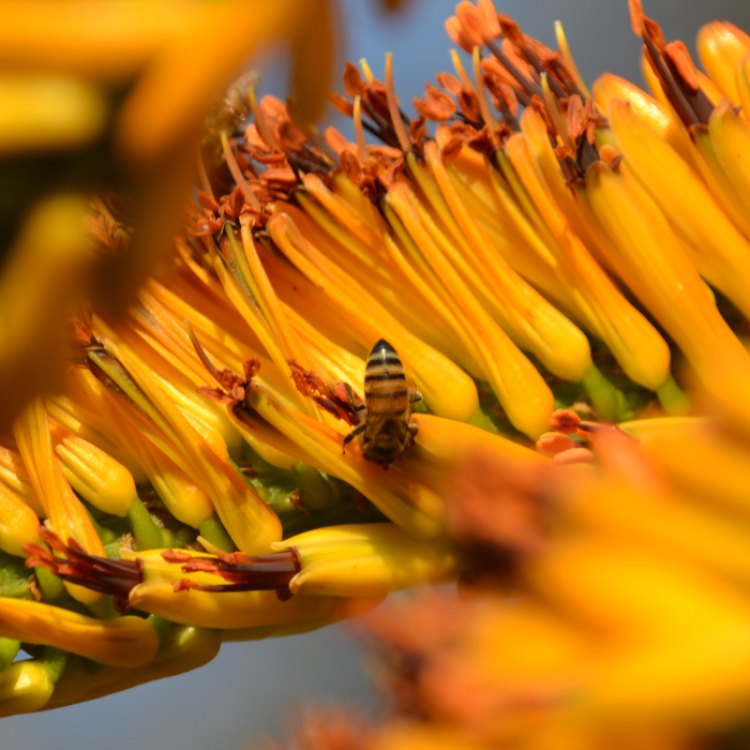
The Thriving and Controversial World of the Africanized Bee
Disclaimer: The content provided is for informational purposes only. We cannot guarantee the accuracy of the information on this page 100%. All information provided here may change without prior notice.



